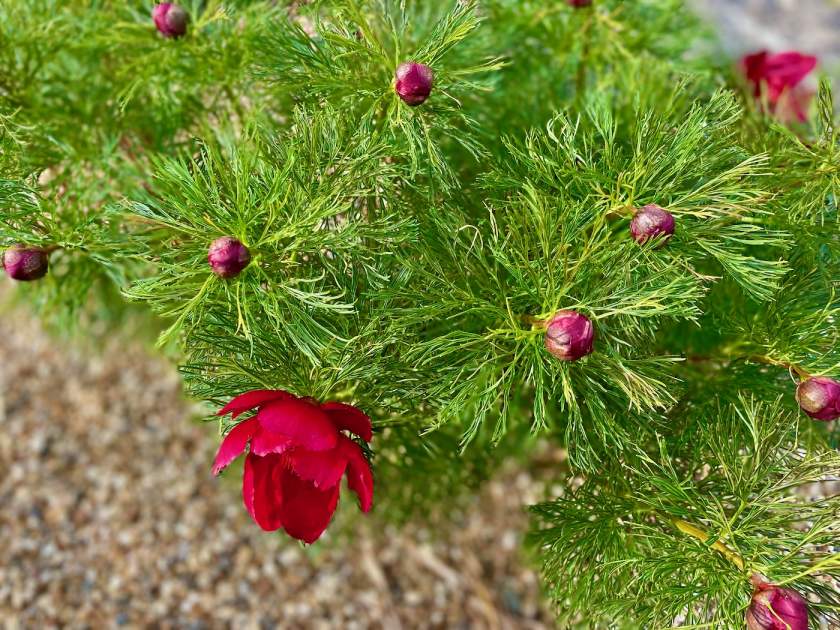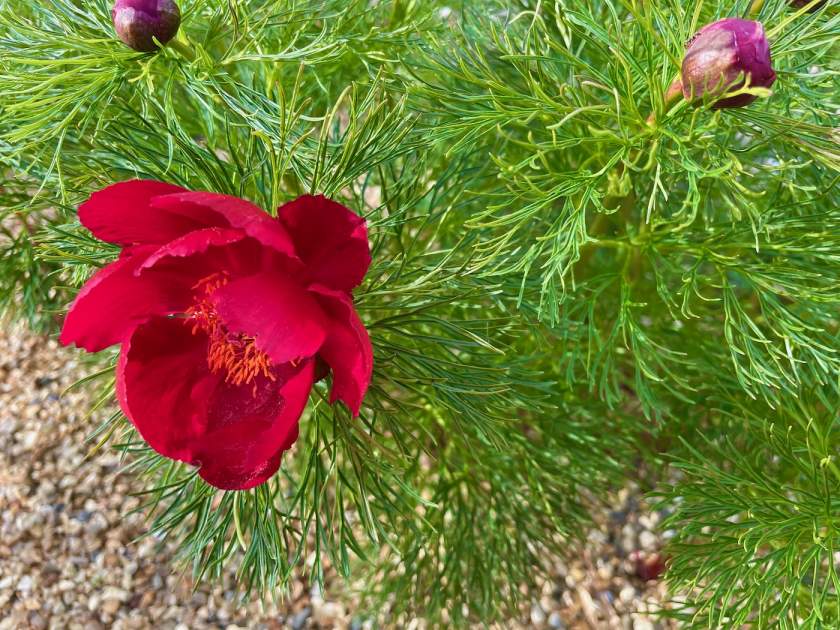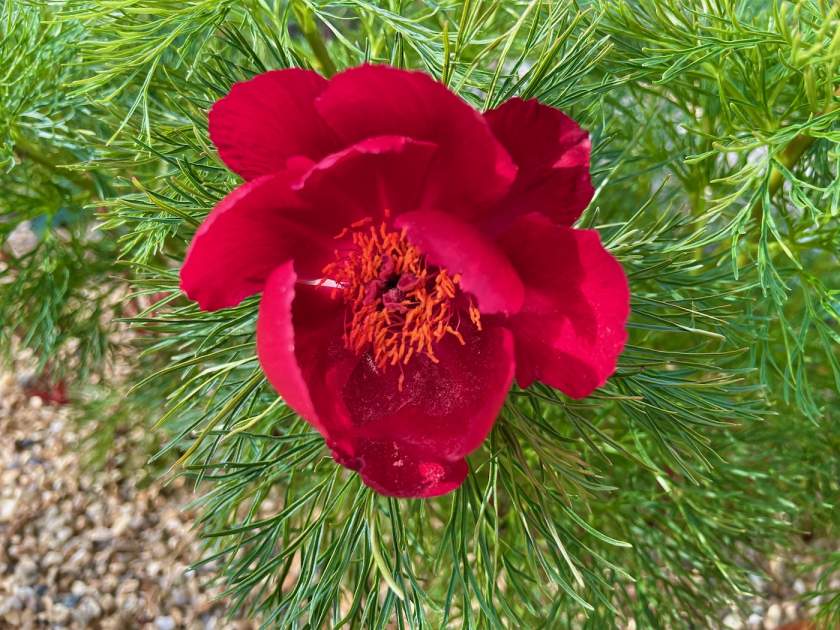Discover the Exquisite Beauty of Paeonia tenuifolia – The Fernleaf Peony
Paeonia tenuifolia, commonly known as Fernleaf Peony, is a stunning herbaceous perennial belonging to the family Paeoniaceae. This captivating peony species is native to Eastern Europe, specifically the Caucasus Mountains. It can be found flourishing in large fields in Vashlovani National Park in Georgia, the Black Sea coast of Ukraine, and spreading westward into Bulgaria, Romania, and Serbia, as well as eastward to northwestern Kazakhstan. This remarkable plant was first described by Carl Linnaeus in the 10th edition of his Systema naturae in 1759, highlighting its long history of botanical recognition.
Characteristics of Leaves and Flowers Fernleaf Peony, true to its name, exhibits delicate fern-like foliage that adds an enchanting touch to its overall appearance. The attractive green leaves are deeply divided and lobed into needle-like, feathery segments, creating a fine-textured and elegant display. In mid-season, typically in May, this peony species unveils its captivating dark red flowers. These single flowers, reaching approximately 3 inches (7.6 cm) in diameter, are a rich crimson-red hue, further accentuated by contrasting golden-yellow stamens at their center. The blossoms, borne one per stem, stand out beautifully against the finely-divided foliage, creating a captivating contrast.
Cultivation of Paeonia tenuifolia:
Sunlight and Location: Full Sun to Part Shade Fernleaf Peony thrives in a variety of light conditions, ranging from full sun to part shade. It performs best when provided with ample sunlight but can tolerate some light afternoon shade. When selecting a location for planting, consider a spot that offers a balance of sunlight and shade throughout the day.
Watering: Medium Moisture This peony species prefers medium moisture levels in the soil. Ensure regular watering to keep the soil consistently moist, especially during periods of dry weather. However, it is important to avoid overwatering, as excessive moisture can lead to root rot and other problems. Strive for a balanced watering routine that provides adequate hydration without waterlogging the soil.
Soil: Rich, Fertile, and Well-Drained To support optimal growth and blooming, Paeonia tenuifolia thrives in rich, fertile soil with good drainage. Prior to planting, amend the soil with organic matter such as compost to enhance its fertility and improve moisture retention. Well-drained soil is crucial to prevent waterlogging and ensure the health of the plant.
Pest and Disease Management Fernleaf Peony is generally considered to be relatively pest-free. However, it may occasionally face challenges such as Botrytis blight and Phytophthora blight. Monitor the plants closely for any signs of disease and take appropriate action if necessary. Ants on peony buds are a common occurrence and are harmless to the plant. If the plant fails to flower, several factors may be responsible, including improper planting depth, excessive shade, late frost damage to buds, or recent disturbance or transplantation.
Propagation and Maintenance
Propagate Fernleaf Peony through seed germination or by separating the tubers during the summer dormancy period. When the foliage dies down in the fall, cut it back to the ground and remove it from the garden. The plant does not require division and can be left undisturbed for extended periods, as it is long-lived and thrives when left undisturbed.
Garden Uses and Benefits Fernleaf Peony is a highly desirable plant for various garden settings. Its early flowering season, typically in late spring or early summer, adds an alluring charm to the landscape. Consider planting it as a specimen plant or in groupings for borders and beds, creating a stunning visual impact. It also works wonderfully as an informal hedge or to border a walkway or driveway. With its captivating blooms and attractive foliage, Paeonia tenuifolia is an excellent choice for cottage gardens or mixed perennial beds. Its nectar-rich flowers attract butterflies, adding an element of wildlife interest to your garden.
Cautionary Notes It is important to note that Fernleaf Peony is toxic to dogs, cats, and horses. Exercise caution when planting it in areas accessible to pets or grazing animals.
Experience the beauty and grace of Paeonia tenuifolia, the Fernleaf Peony, as it unveils its captivating crimson flowers against a backdrop of finely-divided fern-like foliage. This delightful perennial is a treasure in any garden, offering early-season blooms, ease of cultivation, and an enduring charm that will enchant any observer.






